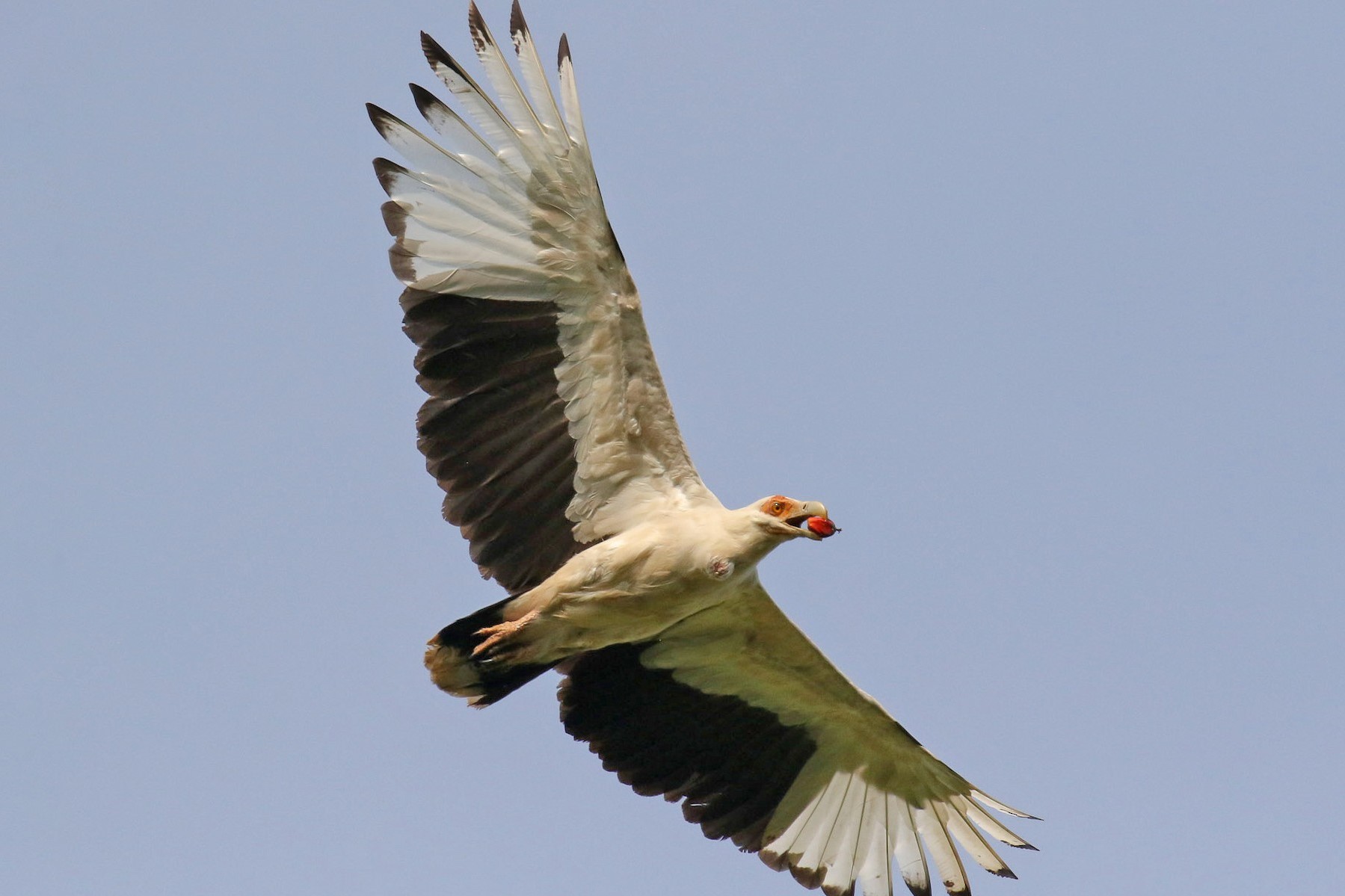The Palm-Nut Vulture: Uganda’s Elegant Raptor
The Palm-Nut Vulture. Uganda, often referred to as the “Pearl of Africa,” boasts a rich and diverse ecosystem teeming with unique wildlife. Among the country’s fascinating avian inhabitants is the Palm-Nut Vulture, a majestic raptor known for its distinctive appearance and ecological significance. In this article, we will explore the world of this fascinating avian in Uganda, shedding light on its characteristics, habitat, and importance in the country’s natural heritage.
Characteristics of the Palm-Nut Vulture
The Palm-Nut Vulture, scientifically known as (Gypohierax angolensis), is a medium-sized bird of prey with a wingspan of about 150 centimeters. What distinguishes this species is its striking appearance. Adult Palm-Nut Vultures have a predominantly white plumage with contrasting black flight feathers, tail, and facial mask. Their beaks are curved, slender, and specialized for their unique diet, which predominantly consists of palm nuts and fruit.
Habitat and Distribution
In Uganda, Palm-Nut Vultures are primarily found in the northern and eastern parts of the country, especially in regions with a mix of woodlands, savannas, and water bodies. These raptors are highly adaptable and are known to inhabit a variety of landscapes, including riverbanks, forests, and palm groves.
The Palm-Nut Vulture’s range extends beyond Uganda, encompassing other African countries such as Sudan, South Sudan, Ethiopia, Kenya, and Tanzania. This wide distribution showcases their remarkable ability to thrive in diverse environments.
Ecological Significance
Palm-Nut Vultures play a vital role in Uganda’s ecosystem. Their unique dietary preferences set them apart from most other raptors. While they do occasionally hunt small prey like birds or reptiles, their primary source of sustenance is the fruit of oil palms. By feeding on these fruits, they help control the spread of oil palm trees, which can become invasive if not managed. In this way, Palm-Nut Vultures indirectly contribute to the balance of their environment.
Conservation Status
The Palm-Nut Vulture, like many other wildlife species, faces threats to its population. Habitat destruction due to deforestation, agricultural expansion, and human encroachment poses a significant risk to their survival. Additionally, accidental poisoning through contaminated prey and hunting also contribute to their decline.
Efforts to protect the Palm-Nut Vulture are essential. In Uganda, organizations like the Uganda Wildlife Authority and conservation groups work to preserve the habitats and raise awareness about the importance of these raptors in the country’s ecosystems.
Remarks – The Palm-Nut Vulture
The Palm-Nut Vulture is a magnificent and ecologically important species in Uganda. Its unique dietary habits, striking appearance, and adaptability make it a valuable part of the country’s natural heritage. Conservation efforts are crucial to ensure the survival of this remarkable bird of prey and to maintain the delicate balance of Uganda’s ecosystems. By appreciating and protecting the Palm-Nut Vulture, we contribute to the preservation of the “Pearl of Africa’s“ unique biodiversity.








